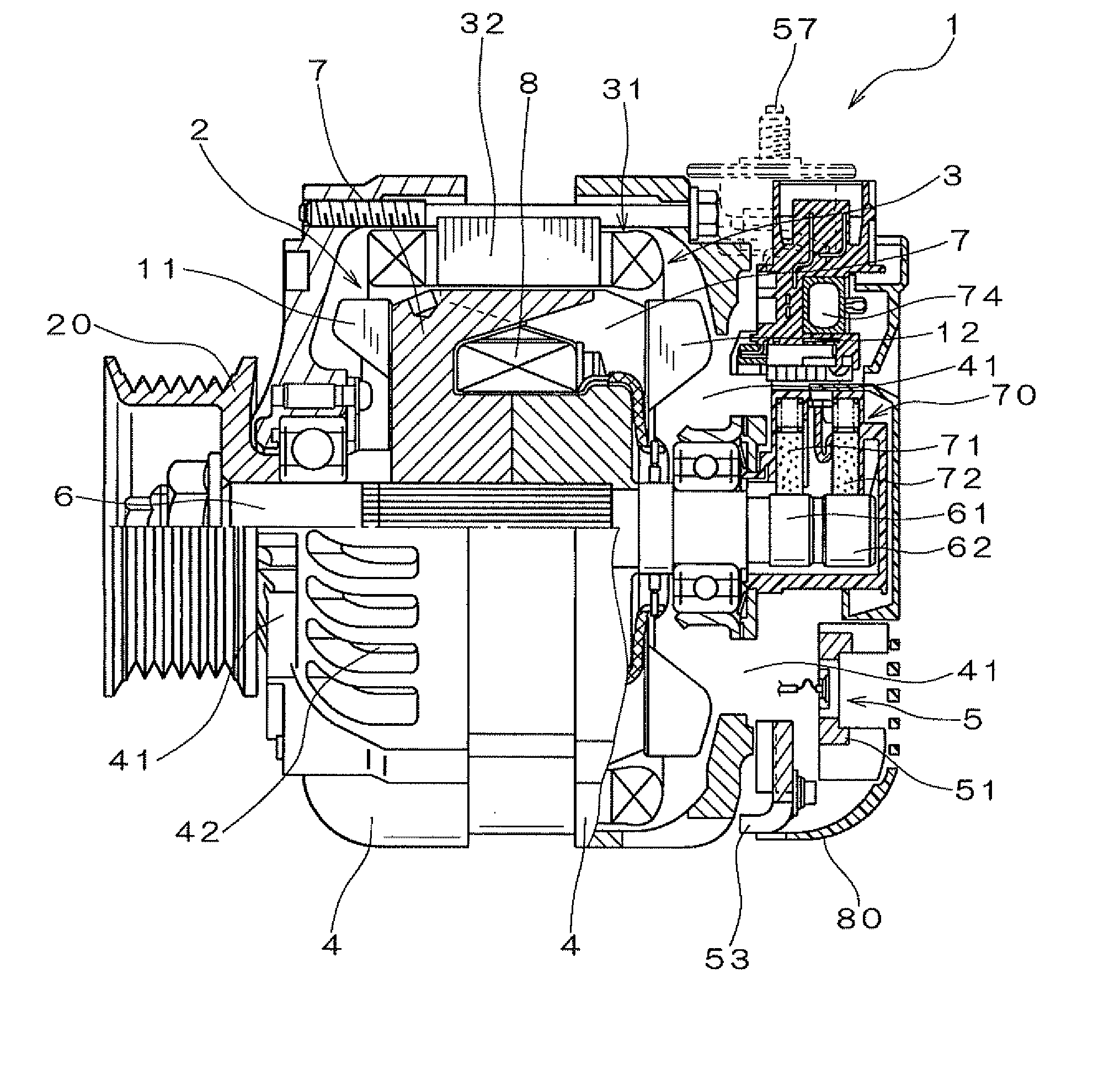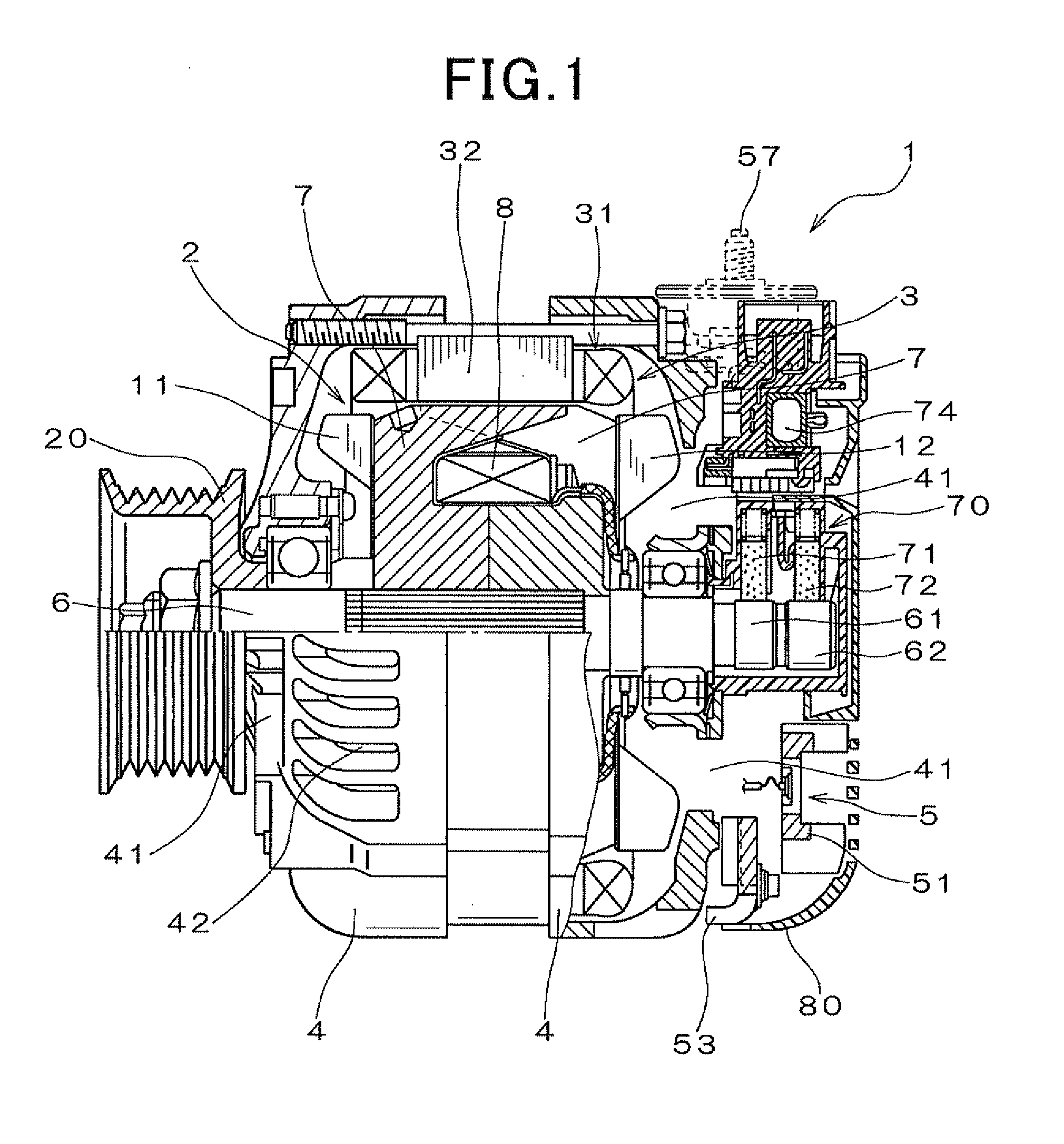Alternator for vehicle with heat dissipating fin
a technology of heat dissipator and vehicle, which is applied in the field of alternative devices, can solve the problems of the reduction in and achieve the effects of facilitating the control of the sub-fin, and reducing the production cost of the rectifier
- Summary
- Abstract
- Description
- Claims
- Application Information
AI Technical Summary
Benefits of technology
Problems solved by technology
Method used
Image
Examples
Embodiment Construction
[0040]Referring to the drawings, wherein like reference numbers refer to like parts in several views, particularly to FIG. 1, there is shown an AC generator or alternator 1 for automotive vehicles according to the first embodiment.
[0041]The alternator 1 consists essentially of a rotor 2, a stator 3, a frame assembly 4, and a rectifier 5.
[0042]The rotor 2 is, as clearly shown in FIG. 1, made up of a pair of pole cores 7 with claws and a field coil 8 retained between the pole cores 7. The field coil 8 is made of copper wire which is coated with an insulator and wound coaxially in the form of a cylindrical shape. A rotating shaft 6 is inserted through the pole cores 7. A cooling fan 11 is welded to an end wall of a front one (i.e., a left one, as viewed in FIG. 1) of the pole cores 7. The cooling fan 11 works to suck air from the front of the alternator 1 and discharge it axially and radially of the alternator 1. Similarly, a centrifugal fan 12 is welded to an end wall of a rear one of...
PUM
 Login to View More
Login to View More Abstract
Description
Claims
Application Information
 Login to View More
Login to View More - R&D
- Intellectual Property
- Life Sciences
- Materials
- Tech Scout
- Unparalleled Data Quality
- Higher Quality Content
- 60% Fewer Hallucinations
Browse by: Latest US Patents, China's latest patents, Technical Efficacy Thesaurus, Application Domain, Technology Topic, Popular Technical Reports.
© 2025 PatSnap. All rights reserved.Legal|Privacy policy|Modern Slavery Act Transparency Statement|Sitemap|About US| Contact US: help@patsnap.com



